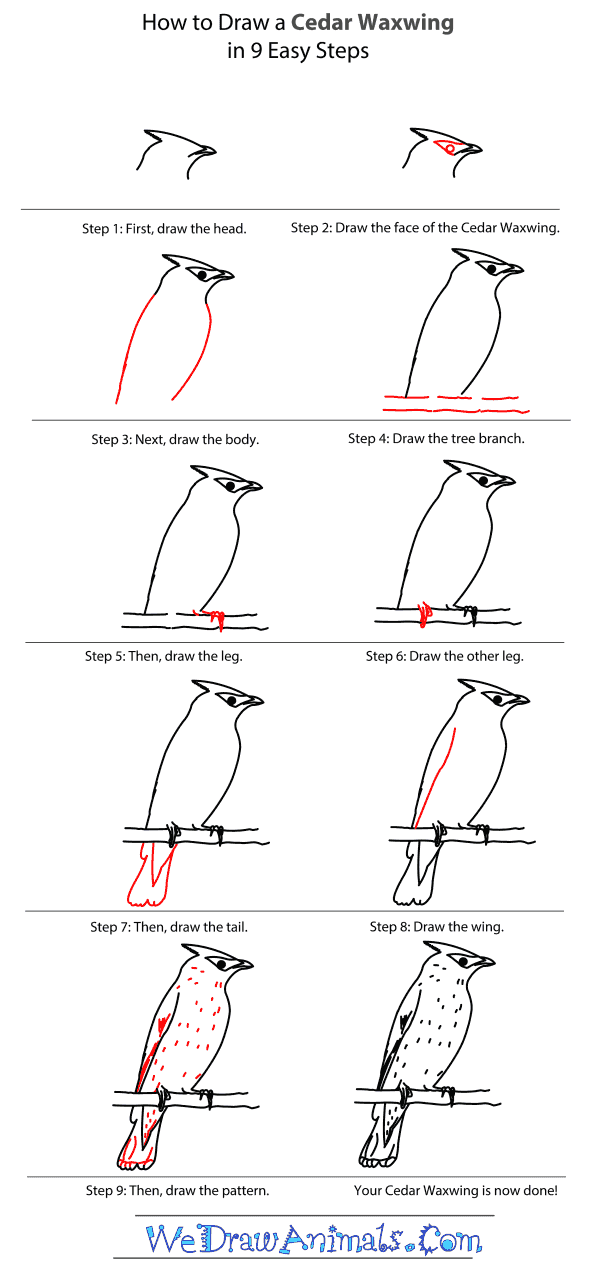In this quick tutorial you'll learn how to draw a Cedar Waxwing in 9 easy steps - great for kids and novice artists.
The images above represent how your finished drawing is going to look and the steps involved.
Below are the individual steps - you can click on each one for a High Resolution printable PDF version.
At the bottom you can read some interesting facts about the Cedar Waxwing.
Make sure you also check out any of the hundreds of drawing tutorials grouped by category.
How to Draw a Cedar Waxwing - Step-by-Step Tutorial
Step 1: Start your Cedar Waxwing bird by draw the head first. Make a triangle shape, and add the pointy beak on the right side. Add the neck with two curved lines going down.
Step 2: Draw a triangle shape with a circle inside for the eye. This is a very unique pattern on the head.
Step 3: To draw the body, draw a smooth line down the back. For the front, draw a log curved line going downward.
Step 4: Draw a few straight lines under the Cedar Waxwing for a tree branch.
Step 5: Add the leg by drawing several pointy lines that come to points for the toes coming over the perch.
Step 6: Now add the other leg by drawing a few more pointy lines.
Step 7: Draw the tail as shown by making a few curved lines ending in round feathers.
Step 8: Now add the wing by drawing a curved line in the body.
Step 9: Add a few small lines throughout the body for the feather pattern. Also, add a few lines down in the tail. The Cedar Waxwing has many beautiful colors like blue in the wings, and yellow in the head. There are also red marks under the wins which look like drops of wax. The eye is also surrounded by black.
Interesting Facts about the CEDAR WAXWING
The Cedar Waxwing is a member of the bird family and the scientific term for them is Bombycilla cedrorum. The name comes from the animal’s red marks under the wings which look like drops of wax. It is a medium size for a bird that is brown, grey, and yellow. It has a long crest on its head and a black mask on its face.
Did you know?
- The animal was first documented in 1808.
- They can reach up to more than .5 feet in length.
- The bird flies at speeds of up to 25 miles per hour.
- They can fly at an altitude of up to 2,000 feet high.
- The creature can make a nest up to almost 20 feet from the ground.
- They can take almost 1 week to build the nest.
- The nest can require over 2,500 trips of delivered material to complete.
- They can build a nest over .5 feet in diameter.
It is native to North and Central America. They are passerine types like most birds are, having three toes facing forward and one backward. Sometimes the mother will steal nesting material from other bird’s nests. There are not many of these creatures, but they are the least concern for a possibility of extinction.










